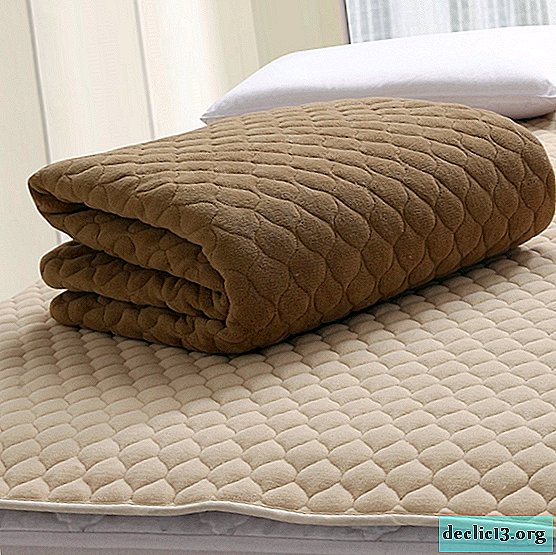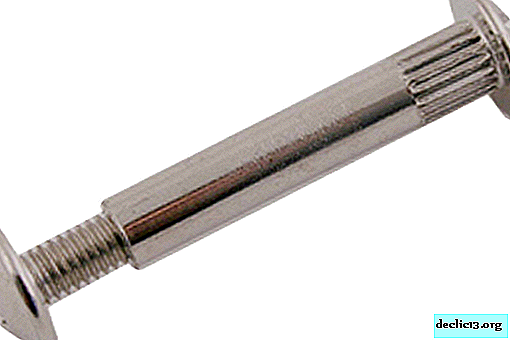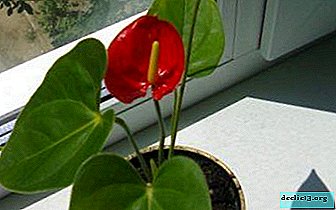Why legs swell in women and what to do

Many women are familiar with the problem when in the morning the legs look great, and in the evening there is a feeling of discomfort, tiredness in the legs and a swollen unattractive look. Such symptoms can be harbingers of serious illness. Therefore, having noticed that the legs have changed their appearance, rather, figure out why the legs swell in women and decide what to do.
A light casual walk is one of the main signs of a woman's youth. But almost every lady knows the feeling when at the end of the day it hurts to take a step in your favorite shoes. It used to be that the problem of leg swelling was typical for mature women after 50 years, but now more and more young women are facing it.
In a healthy body, the processes self-regulate, and the fluid is excreted on its own, without forming edema. Having identified the cause of leg edema, it will be possible to determine the method of treatment. In some cases, treatment is not needed.
Stagnant fluid in the legs and, therefore, swelling can be caused by staying in a static position for a long time, for example, air travel, a long trip by car or bus. In such cases, swelling will pass after rest, treatment is not necessary.
If swelling occurs periodically and persists for a long time, this is a signal to see a doctor.Causes of swelling of the lower extremities in women

- Heart diseases. Edema associated with heart disease occurs in the evening and disappears after sleep. Usually they are symmetrical, spreading on the ankles, lower leg and part of the thigh. The skin at the site of edema is pale, stretched and cold. Swelling can be accompanied by pain in the upper quadrant on the right, muscle weakness and shortness of breath. With such symptoms, it is urgent to visit a cardiologist.
- Kidney disease. In kidney diseases, leg swelling is accompanied by swelling on the face, lower back pain, and a change in the color of urine. If these symptoms are detected, you should not postpone the visit to the nephrologist.
- Violation of the lymphatic outflow. Edema in violation of the lymphatic outflow or lymphedema extends to the ankle joint and lower leg, sometimes the knee is affected. Dense edema appears in the evening and does not disappear. As a rule, one leg swells, after a while the other swells, but the swelling on it is less pronounced. In this case, only treatment by a phlebologist will help.
- Violations of the venous outflow. In this case, the swelling is loose, often soft, appears at the site of the gum of socks and stockings. Constant edema and vascular "stars" on the legs indicate the development of varicose veins. Competent treatment prescribed by a phlebologist can prevent the progression of the disease.
- PMS (premenstrual syndrome). Swelling of the feet and legs is possible in the second half of the menstrual cycle. They cause hormonal imbalance. As a rule, such edema is minor and disappears after the end of critical days. If edema is a concern, you should make an appointment with a gynecologist-endocrinologist for a consultation.
- Pregnancy. Edema in late pregnancy is not uncommon. They appear on the feet and legs, then can move higher. It is much more serious when edema is accompanied by an increase in protein in the urine and arterial hypertension. Then they indicate a kidney pathology in pregnant women (nephropathy). The process of determining the diagnosis and the appointment of treatment should be monitored by a gynecologist.
What to do with leg swelling?

When starting treatment, you need to understand that edema is one of the symptoms of the disease. It will be possible to completely solve the problem only by applying the complex therapy developed and prescribed by the doctor. Medicine has developed a large number of methods for the treatment and prevention of diseases that provoke leg swelling.
- Venotonic. Gels and ointments that improve blood flow and strengthen the walls of blood vessels. Often they include heparin sodium. By activating the exchange of tissues and contributing to the improvement of microcirculation, funds eliminate fluid stagnation. Venotics relieve swelling and fatigue caused by long trips and high temperatures, so they should be in the medicine cabinet if you have to fly or relax in hot places.
- Compression knitwear. Do not neglect such a significant treatment and prevention of foot diseases as compression knitwear, which is divided into preventive and therapeutic. Socks and tights are suitable. For the use of preventive compression underwear, a doctor’s consultation is not required. It is allowed to use healthy people who have to spend a lot of time sitting or standing. Medical knitwear is prescribed only by a doctor who will advise the patient and select an individual product that matches the parameters of the leg. To avoid negative consequences, purchase any type of compression underwear only in a pharmacy.
- Diuretic drugs, herbal preparations. Use these funds carefully and under the supervision of a doctor. Some diuretics work quickly, but remove potassium from the body, which is necessary for normal heart function. Of the side effect of some, a sharp increase in blood pressure should be noted. The best effect of diuretics is achieved at night, so they are used before bedtime and can cause insomnia. You can not constantly use herbal preparations, this can cause addiction and dehydration of the body.
- Lymphatic drainage massage. The procedure is becoming increasingly popular, since in addition to healing it also has a beauty effect. Another name for lymphatic drainage is leg pressure therapy. During a hardware massage, lymph flow normalizes, fluid balance is restored, excess adipose tissue is removed. After it passes swelling and fatigue in the legs is relieved. Despite the advantages, there are several contraindications: the second half of pregnancy, the onset of menstruation, diabetes mellitus, skin diseases, malignant tumors and renal failure.
- Physical activity. A mobile lifestyle helps to avoid many leg problems. Running, walking, skating and skiing, a bicycle will help prevent the appearance of edema. The best sport to get rid of puffiness is water aerobics. In addition to excellent physical activity during movement, water acts on the skin, exerting pressure and preventing the expansion of blood vessels, thereby preventing swelling.
Folk remedies against edema of the lower extremities in women
In addition to the therapy prescribed by your doctor, you can use anti-edema drugs from traditional medicine.
- Infusion of white birch leaves. Pour 1-2 cups of crushed birch leaves with 0.5 liters of boiling water and leave for 24 hours. Consume 0.5 cups no more than 5 times a day.
- Fresh vegetables drink. It will take 0.5 cups of carrot juice, the same amount of freshly squeezed juice of cucumber and one medium lemon. Mix everything and divide the drink into three parts. Drink 3 times a day adding the same portion of warm boiled water.
- Rubbing garlic water. In 0.5 liters of hot water add a head of garlic, mashed to gruel. Boil and leave to insist. The feet are rinsed with warm broth, and the garlic mass is rubbed into the calves and soles.
- Compress from oils. Olive and camphor oils are mixed in equal amounts. By massaging movements, the composition is rubbed into the skin of the legs from the fingers to the knee joints. Wrap the legs with a cotton cloth, then with a woolen scarf or scarf. The best effect is achieved if you leave the compress overnight. Repeat the procedure for 30 days.
- Cabbage compress. Pre-crushed white cabbage leaves are superimposed on the feet and ankles. The compress is fixed with a bandage or gauze and left overnight.
Why legs swell during pregnancy
Swelling of the legs in pregnant women is a common phenomenon. However, it is first to be understood whether it is really swelling or just a pregnant woman recovered. The presence of edema is claimed if the usual shoes become small, more than 300 grams of weight is added per week. If edema is not caused by heart or kidney disease, it usually appears after the fourth week of pregnancy. This period is characterized by swelling of the face, hands.
This should not be considered a pathology. Sodium accumulates in the pregnant body, retaining water, which leads to edema. The heat situation worsens, the use of fried and salty foods. Dangers for the health of women do not represent such edema. It is enough for a pregnant woman to relax, reduce the intake of salty foods, take diuretic tea, and swelling will decrease.
If the edema becomes too massive, the woman gains weight more than normal and the swelling does not decrease at rest, we have to talk about complications that require the supervision of doctors.
Why swollen legs in women after 50 years
Edema is an accumulation of excess fluid in the tissues. Legs may swell in young, healthy people, but with age, this problem becomes more acute. If edema recurs for a long time, venous nodules, browning, spider veins appear on the lower leg, these are harbingers of varicose veins.
Now this disease is "getting younger" and occurs in women after 30 years and even younger, but with age, the likelihood of its development is higher. With special attention to the problems of veins and blood vessels women should be treated after 50 years. The vessels become weaker, the outflow of venous blood is disrupted, so any changes with the legs at this age are an occasion to consult a phlebologist.
Causes of swelling of the legs in the heat

To understand the causes of leg edema, we recall the school course of anatomy. The heart drives blood to the lower extremities, and it returns back thanks to the valves that are in the veins and push the blood to the heart. This is the essence of peripheral circulation. At high ambient temperatures, the circulatory system tries to prevent the body from overheating. The blood vessels of the legs expand, preventing overheating of the legs. Because of this, a full outflow of blood does not occur, therefore, swelling of the legs appears in the heat.
In addition, in the heat of profuse sweating. With then the body loses the salts needed by the veins. It is salts that “draw” blood from the tissues, and the absence of a sufficient amount of them provokes swelling of the legs. As a rule, after sleep and rest, they pass. To cope with swelling in the heat will help the bath with salt, dry mustard, pine needles extract.
Despite the variety of methods for treating leg swelling, the best way to avoid trouble is prevention at home. Control over excess weight, reducing salt intake, refusing fatty, sugary foods and alcohol, taking vitamins B, C, E, comfortable shoes, an active lifestyle - these simple measures will minimize the likelihood of swelling.

















